We feature items we believe will benefit our audience. If you purchase through links on this page, we may earn a small commission. Here’s how we do it.
Ever felt like your face is slicker than an ice rink after a Zamboni convention? Yeah, oily skin can be a real struggle. Constantly blotting, strategically positioned hair to hide the shine – it’s enough to make you want to wear a ski mask year-round (not recommended, by the way). But not anymore, because today we’re diving deep into the world of glycolic acid serums in the fight against excess oil.
We’ll cover everything you need to know about how to use glycolic acid serum for oily skin, from understanding what it is (spoiler alert: it’s life-changing, kind of) to incorporate it into your routine like a pro. So, read on to banish that shine for good! Let’s go!
IN THIS ARTICLE
So, What Exactly Is This Glycolic Acid Stuff?
Let’s get down to the basics first! Glycolic acid is a superstar ingredient in the skincare world, and for good reason. It’s an alpha hydroxy acid (AHA), basically a fancy way of saying it’s a natural exfoliant derived from things like sugar cane and fruits (think yummy!).
Where Did This Ingredient Come From?
Believe it or not, glycolic acid has been around for centuries! Ancient Egyptians used sour milk (which contains lactic acid, another AHA) for Cleopatra-worthy glows. Today, science has perfected this ingredient to be even more effective and gentle on our skin.
How Does Glycolic Acid Serum Benefit Your Skin?
Okay, here’s where things get exciting for us oily skin girlies. The glycolic acid serum works its magic in a few key ways:
- Exfoliation Powerhouse: It gently buffs away dead skin cells that can clog pores and contribute to that dreaded shine.
- Boosts Cell Turnover: Think of it as a skin renewal machine! Glycolic acid helps stimulate the production of new skin cells, leaving you with a brighter, smoother complexion.
- Minimizes Pores: By keeping pores clear and tight, glycolic acid helps reduce their appearance, making your skin look more even-toned.
Understanding Oily Skin: Your Skin’s Not Broken, It’s Just Oily!

Okay, so we’ve established that glycolic acid serum is your potential new skincare must-have. But before we dive into how to use it, let’s chat oily skin.
Characteristics of Oily Skin: The Telltale Signs
If you find yourself blotting throughout the day and your makeup seems to melt off faster than an ice cream cone on a hot day, you’ve probably got oily skin. Here are some other signs to look out for:
- Larger pores
- Shiny complexion
- Prone to breakouts
Common Concerns and Challenges with Oily Skin
Constantly battling shine and breakouts can be frustrating. Here are some of the common struggles you might face with oily skin:
- Finding makeup that stays put
- Feeling self-conscious about shine
- Dealing with persistent breakouts
Don’t worry, though! Glycolic acid serum can be a game-changer for these concerns. We’ll get to exactly how to use it in the next section!
Why Glycolic Acid is Your Oily Skin BFF: It’s All About Balance!
We talked about how glycolic acid works its magic in general, but let’s get specific! Here’s why glycolic acid serum is a dream come true for oily skin:
Exfoliation Powerhouse: Buffing Away Excess Shine
Remember how we mentioned glycolic acid is an exfoliation champ? This is especially important for oily skin. Here’s the deal:
- Dead Skin Cell Buildup: Our skin naturally sheds dead cells, but sometimes they don’t get the memo and stick around. This buildup can clog pores and trap oil, leading to that unwanted shine.
- Glycolic Acid to the Rescue! By gently dissolving those dead skin cells, glycolic acid clears your pores and prevents excess oil from getting trapped. This translates to a less shiny, more balanced complexion.
Basically, using a glycolic acid serum is like giving your skin a fresh start – minus the harsh scrubbing!
Oil Control: Taming the T-Zone One Drop at a Time
Oily skin often struggles with the overproduction of sebum, the natural oil our skin produces. This can lead to a greasy feeling and clogged pores. But fear not, because here’s where glycolic acid steps in:
- Regulating Oil Production: Studies suggest that glycolic acid can help regulate sebum production. Think of it as gently telling your skin to chill out on the oil production a bit.
- Less Sebum, Less Shine: With sebum production under control, you’ll experience less shine and a more matte finish throughout the day.
Pore Minimization: Making Those Pores Disappear (Almost)!
Large pores are another common concern with oily skin. Here’s how glycolic acid helps:
- Unclogging the Pores: By removing dead skin cells and excess oil, glycolic acid helps keep pores clear. This prevents them from stretching out and appearing larger.
- Minimizing Appearance: Even if your pores aren’t completely shrunk (hey, genetics!), a glycolic acid serum can help minimize their appearance, giving your skin a smoother, more even texture.
Choosing Your Glycolic Acid Serum: Finding Your Perfect Match!

So you’re sold on the power of glycolic acid serum for oily skin. But with all the options out there, how do you pick the right one? Don’t worry, we’ve got you covered!
Concentration Levels
When it comes to glycolic acid serums, concentration matters. Here’s a quick breakdown:
- Oily Skin Sweet Spot: For oily skin, a concentration between 5% and 10% is a good starting point. This is strong enough to be effective but gentle enough for most skin types.
- Lower Concentrations (2-4%): These are great for beginners or those with more sensitive skin. They still offer exfoliation benefits but might take a bit longer to show dramatic results.
- Higher Concentrations (10% and above): Leave these to the more experienced skincare aficionados. Higher concentrations can be very effective, but they also increase the risk of irritation. It’s always best to start low and go slow!
Remember: It’s always better to start with a lower concentration and gradually increase it as your skin gets used to the product. Listen to your skin – if you experience any redness, burning, or irritation, take a break and switch to a lower-concentration serum.
Formulation Types
Glycolic acid serums come in different textures, each with its own benefits:
- Gels: Lightweight and refreshing, gels are perfect for oily skin. They absorb quickly and don’t leave a greasy residue.
- Liquids: Another good option for oily skin, liquid serums offer a slightly thicker consistency than gels.
- Creams: These tend to be more hydrating and are better suited for normal to dry skin types.
Bonus Tip: Look for serums with ingredients that complement glycolic acid, like:
- Salicylic Acid: This buddy helps unclog pores and fight breakouts – a double whammy for oily skin!
- Niacinamide: This all-rounder helps control oil production, minimize pores, and soothe irritation.
Product Recommendations
Alright, so you’re ready to dive into the world of glycolic acid serums for your oily skin! Here’s the fun part – product recommendations! While we can’t give specific brand endorsements, here are some pointers to help you find your perfect match:
Concentration
Oily Skin Sweet Spot: As mentioned before, for oily skin, a concentration between 5% and 10% is a good starting point.
Lower Concentration (2-4%): Consider these for more sensitive skin or if you’re new to AHAs. Brands like The Ordinary and Paula’s Choice offer gentle glycolic acid toners or serums at this concentration. Check them out:
The Ordinary Glycolic Acid 7% Toning Solution
Paula’s Choice SKIN PERFECTING 8% AHA Gel Exfoliant with Glycolic Acid
Higher Concentrations (10% and above): Leave these to the more experienced skincare warriors. Some brands like Drunk Elephant (with their T.L.C. Framboos™ Glycolic Night Serum) offer higher concentrations, but it’s important to patch test and ease into use.
Drunk Elephant T.L.C. Framboos Glycolic Night Serum
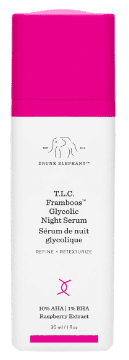
Formulation
- Gel or Liquid: These lightweight textures are ideal for oily skin as they absorb quickly and won’t leave a greasy residue. The Medik8 Press & Glow is a gentler gel-based option, while Farmacy Deep Sweep 2% BHA Pore Cleaning Toner is a good liquid choice (although note this one is a BHA toner, not specifically glycolic acid).
Medik8 Press & Glow
Farmacy Deep Sweep 2% BHA Toner
Ingredient Powerhouses
Hyaluronic Acid: Incorporate products with other beneficial ingredients like hyaluronic acid for oily skin alongside your glycolic acid serum. This hydrates the skin without clogging pores.
CeraVe Hydrating Hyaluronic Acid Serum
Niacinamide: This superstar ingredient helps control oil production and minimize pores. The Inkey List Niacinamide Serum is a great option to add to your routine alongside your glycolic acid serum.
The INKEY List Niacinamide
Glycolic Acid Serum in Your Routine: The Winning Formula!
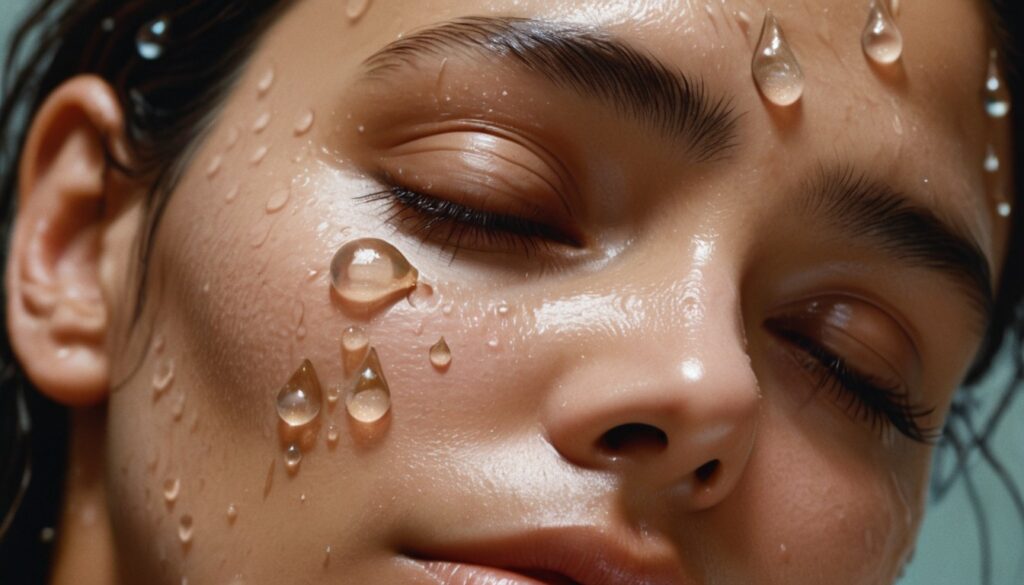
Now you’ve snagged your perfect bottle of glycolic acid serum – high fives! But before you go all gung-ho and drench your face, there are a few key things to know about incorporating it into your routine.
Patch Testing 411
Just like meeting a new potential friend, it’s always wise to do a patch test with a new skincare product, especially an AHA like glycolic acid. Here’s why:
- Skin Sensitivity: Everyone’s skin reacts differently. A patch test helps you identify any potential irritation before applying the product to your entire face.
How to Patch Test:
- Apply a small amount of the serum to a non-descript area of your skin, like your inner forearm.
- Wait 24 hours. See if you experience any redness, burning, or itching.
- No irritation? Great! You’re probably good to go ahead and use it on your face.
Remember: Patch testing is crucial. It can save you from redness and irritation!
Frequency of Use
Here’s the thing with glycolic acid serum: a little goes a long way, especially for oily skin. Here’s how often to use it:
- Start Slow: Begin with using your serum 1-2 times a week at night. Let your skin adjust to this new addition.
- Gradually Increase: If your skin tolerates it well, you can gradually increase it to nightly use. But listen to your skin!
- Overdoing It? If you experience any irritation, take a break and reduce usage.
Remember: Consistency is key, but so is listening to your skin. Find the frequency that works best for you.
Application Steps: Glycolic Acid 101
Now for the fun part – applying your magic potion! Here’s a step-by-step guide:
- Cleanse First: Wash your face with a gentle foaming cleanser to remove makeup and impurities.
- Tone (Optional): If you use a toner, apply it after cleansing and before the serum.
- Less is More: Apply 2-3 drops of the serum to your fingertips.
- Gently Pat: Dab the serum evenly onto your face, avoiding the eye area.
- Moisturize: After the serum has dried completely, apply a lightweight, oil-free, non-comedogenic moisturizer.
- Sun Protection is Key: Glycolic acid can make your skin more sensitive to the sun. Apply a broad-spectrum SPF 30 or higher sunscreen every single day, even on cloudy days!
Remember: Be gentle with your skin during application. A little product goes a long way!
Glycolic Acid: The Good, the (Potentially) Bad, and How to Be a Pro

So we’ve talked about the amazing benefits of glycolic acid serum for oily skin. But like any good friend, it’s important to be honest – sometimes things can get a little bumpy (literally!). Here’s the lowdown on potential side effects and how to manage them like a boss.
Common Side Effects
While glycolic acid is generally well-tolerated, especially for oily skin types, there’s a chance you might experience some temporary side effects when you first start using it. Here are the most common culprits:
- Irritation: This can show up as a mild tingling or burning sensation.
- Redness: Your skin might get a bit rosy, especially after application.
- Dryness: Glycolic acid can sometimes zap away a bit too much oil, leaving your skin feeling dry.
Remember: These side effects are usually temporary and should subside as your skin adjusts to the product.
Preventive Measures: An Ounce of Prevention…
There are a few things you can do to minimize the risk of side effects and have a smooth (pun intended) experience with your glycolic acid serum:
- Start Low, Go Slow: As mentioned before, begin with a lower concentration (around 5%) and use it only 1-2 times a week. Gradually increase frequency and concentration as your skin gets used to it.
- Listen to Your Skin: If you experience any irritation, take a break and reduce usage. It’s better to be safe than sorry!
What to Do If You Experience Side Effects: Don’t Panic!
Even with the best intentions, side effects can happen. Here’s what to do if you experience some irritation:
- Reduce Usage: Take a break from the serum for a few days and then reintroduce it slowly.
- Soothe It Up: Incorporate calming ingredients like aloe vera or hyaluronic acid into your routine to help reduce redness and dryness.
- Moisturize, Moisturize, Moisturize: A lightweight, oil-free moisturizer is your BFF during this time. It will help replenish any lost moisture.
Remember: If the irritation persists or worsens, stop using the product and consult a dermatologist. They can advise you on the best course of action for your skin.
Bonus Tips for Oily Skin: Your Glycolic Acid Dream Team!

Now you’ve mastered the art of incorporating glycolic acid serum into your routine. But for truly epic results, let’s talk about some complementary practices that will take your oily skin to the next level.
Hydration and Moisturization
Just because your skin produces a lot of oil doesn’t mean it doesn’t need hydration. Here’s the deal:
- Oil Production vs. Hydration: Oil is produced deep down in your pores, while hydration refers to the water content in your skin’s top layer.
- Hydration is Key: Proper hydration plumps up your skin cells, making them less likely to send out an SOS signal for more oil production.
So, how do you hydrate oily skin? Here are some tips:
- Lightweight Moisturizer: Skip the heavy creams and opt for a lightweight, oil-free moisturizer. Look for ingredients like hyaluronic acid, which attracts and retains moisture.
- Hydrating Toners (Optional): Alcohol-free hydrating toners can add a layer of moisture without clogging pores.
Remember: A happy, hydrated complexion is less likely to overproduce oil.
Sun Protection
This one’s super important, no matter your skin type. But listen up – glycolic acid can make your skin more sensitive to the sun. Here’s why sun protection is crucial:
- Increased Photosensitivity: Glycolic acid can increase your skin’s sensitivity to UV rays, making you more prone to sunburn and hyperpigmentation (dark spots).
- Sun Protection Every Day: Apply a broad-spectrum SPF 30 or higher sunscreen every single day, even on cloudy days! Reapply throughout the day, especially if you’re sweating or spending extended time outdoors.
Remember: Sun protection is non-negotiable when using a glycolic acid serum. Protect that beautiful skin!
Healthy Lifestyle Habits: Beauty Starts From Within!
Taking care of your skin goes beyond just products. Here are some lifestyle habits that can work wonders for oily skin:
- Diet and Hydration: Eating a balanced diet rich in fruits, vegetables, and whole grains can nourish your skin from the inside out. Don’t forget to stay hydrated by drinking plenty of water throughout the day.
- Stress Management: Stress can wreak havoc on your skin, including making it oilier. Find healthy ways to manage stress, like exercise, yoga, or meditation.
Final Thoughts
Oily skin? Been there, done that, got the blotting papers to prove it. But what if I told you that glycolic acid serum can totally make you ditch the blotting papers and embrace a smoother, brighter complexion? This how-to-use glycolic acid guide has equipped you with everything you need to know about incorporating this powerhouse ingredient into your routine. You’ve learned about the benefits for oily skin, how to choose the right serum and the best practices for application. Now it’s your turn to put this knowledge to the test!
Remember, a little patience goes a long way. Start slow with your glycolic acid serum, listen to your skin, and don’t forget the SPF! So ditch the blotting papers, and get ready to experience the transformative power of glycolic acid serum for oily skin!
Frequently Asked Questions (FAQs)
Can I use glycolic acid serum with other active ingredients?
Tread carefully! While glycolic acid can be a great addition to your routine, it’s best not to combine it with other strong actives like retinol or benzoyl peroxide at first. These can be too harsh on your skin, especially when you’re starting out. It’s best to alternate usage or speak to a dermatologist about creating a safe and effective routine.
Is glycolic acid suitable for sensitive oily skin?
Glycolic acid can be effective for oily skin, but if you have sensitive skin, it’s important to proceed with caution. Here are some tips:
- Start with a lower concentration (2-4%) and use it only 1-2 times a week.
- Patch test before applying to your entire face.
- Look for soothing ingredients in your serum, like aloe vera or hyaluronic acid.
- Pay close attention to your skin’s reaction. If you experience any irritation, stop using the product.
How long before I see results?
Everyone’s skin reacts differently, but you should generally start to see some improvement in your skin texture and clarity within a few weeks of consistent use with a glycolic acid serum. For more dramatic results, it might take 6-8 weeks.
What should I do if my skin purges?
Purging is a temporary breakout that can sometimes occur when you start using a new exfoliating product like glycolic acid. It’s your skin pushing out existing congestion. If you experience purging, don’t panic! Just keep using the product consistently, and the breakouts should subside within a few weeks. However, if the purging is severe or persists for a long time, consult a dermatologist.
Can glycolic acid help with acne scars and hyperpigmentation?
Yes, glycolic acid can be helpful for reducing the appearance of acne scars and hyperpigmentation. By gently exfoliating the top layer of skin, it can help fade dark spots and promote smoother skin texture. However, for significant improvement with acne scars or hyperpigmentation, consult a dermatologist for a targeted treatment plan.


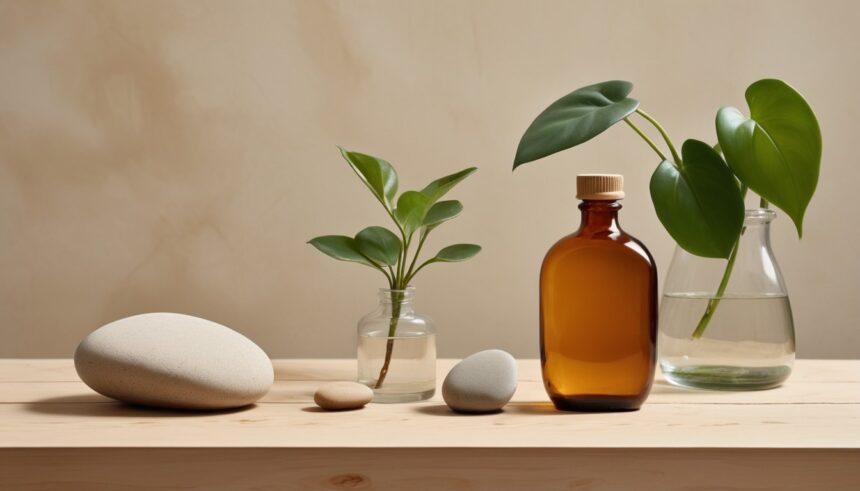
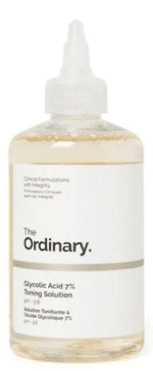
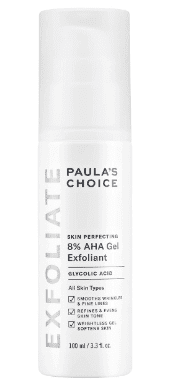
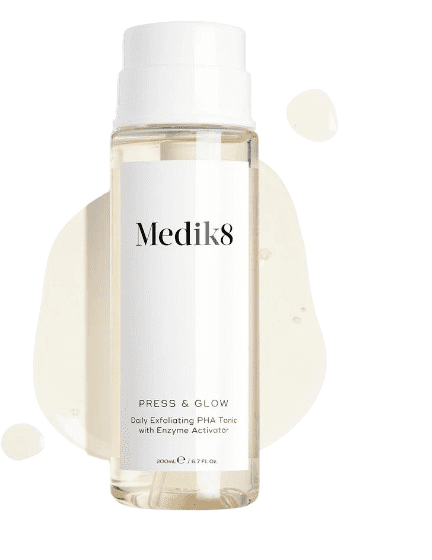
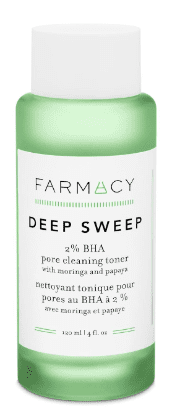


Leave a Reply